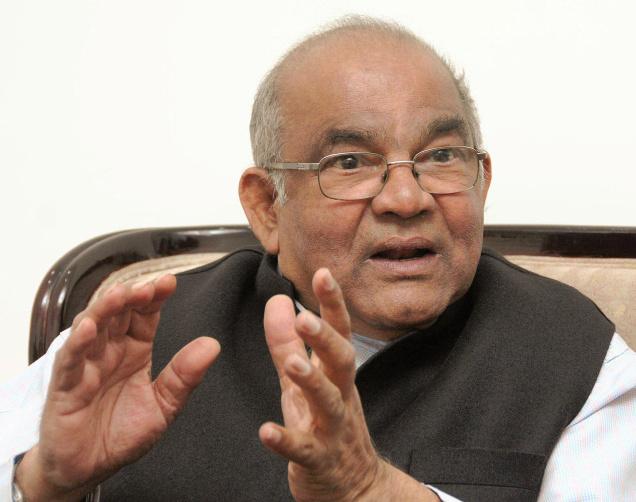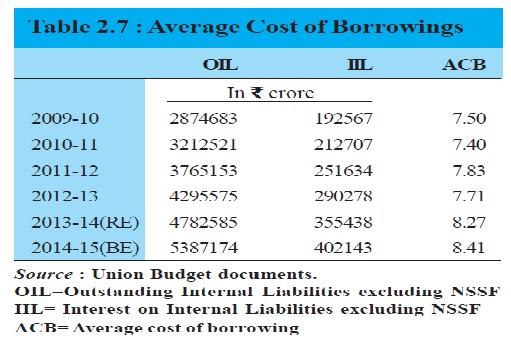
This is a column I should have written earlier this week. But given that I got busy explaining the 7.4% economic growth number, this took a backseat.
The Reserve Bank of India (RBI) presented the Fifth Monetary Policy Statement for this financial year, earlier this week on December 1, 2015. It maintained the repo rate at 6.75%. Repo rate is the rate at which RBI lends to banks and acts as a sort of a benchmark to the interest rates that banks pay for their deposits and in turn charge on their loans.
In the press conference that followed the declaration of the Monetary Policy Statement, Raghuram Rajan, the governor of the RBI, said: “We are still accommodative.” What this means in simple English is that the RBI is still looking to cut the repo rate rather than raise it, if the conditions are right.
Nevertheless, it is unlikely that Rajan and the RBI will cut the repo rate any further before Arun Jaitley presents the next budget in February 2016. Why do I say that? Almost towards the end of the Monetary Policy Statement Rajan says: “The implementation of the Pay Commission proposals, and its effect on wages and rents, will also be a factor in the Reserve Bank’s future deliberations, though its direct effect on aggregate demand is likely to be offset by appropriate budgetary tightening as the Government stays on the fiscal consolidation path.”
The Seventh Pay Commission has recommended a 23.6% overall increase in the salaries of central government employees as well as the pensions of the retired central government employees. The RBI will keep a lookout for the impact this jump in salary and pension will have on inflation in the days to come.
Over and above this, the RBI feels that the impact of the Seventh Pay Commission recommendations on inflation (or what it calls direct effect on aggregate demand) will be offset by the government cutting down on its expenditure in other areas. The fear is that the increased salaries and pensions will lead to higher spending and that will lead to higher inflation.
There are multiple reasons why this is unlikely to happen. The first being that factories are currently running around 30% below capacity. Typically as demand for products and services goes up, the supply side can’t keep pace if it is operating full throttle. That is clearly not the case here. If consumer demand picks up, the supply side can easily accommodate by ramping up production.
Further, the RBI feels that the government will carry out “appropriate budgetary tightening”
to stay on “the fiscal consolidation path”. The Seventh Pay Commission recommendations as and when they are accepted, will lead to a higher expenditure for the government, everything else remaining the same.
The RBI expects that the government will not let this happen by ensuring that it cuts its expenditure on other fronts and ensures that it keeps moving towards the fiscal deficit target of 3% of the gross domestic product for 2017-2018 that it has set for itself (or what the RBI calls the fiscal consolidation path in the monetary policy statement).
While expectation is one thing, the RBI needs to make sure that the government continues moving towards the fiscal consolidation path. And that will only be possible to figure out once the budget for the next financial year 2016-2017 is presented in February 2016.
Given this, the RBI is unlikely to do anything on the interest rate front before it gets a dekko at the next financial year’s budget document.
Another important point that the RBI made in the monetary policy statement was regarding the efficacy of monetary policy. As it pointed out: “Since the rate reduction cycle that commenced in January, less than half of the cumulative policy repo rate reduction of 125 basis points has been transmitted by banks. The median base lending rate has declined only by 60 basis points.” One basis point is one hundredth of a percentage.
What this means is that while the RBI has cut the repo rate by 125 basis points since the beginning of 2015. The banks in turn have managed to cut less than half at 60 basis points. Why is that? A major reason for this is that bad loans have been piling up at banks. The overall bad loans of banks as of September 2015 stood at Rs 3,36,685 crore. As a recent research note by CARE Ratings points out: “Gross NPAs [i.e. bad loans] stood at Rs 3,36,685 crore in Q2-FY16[as on September 30, 2015] increasing by Rs 71,129 crore over Q2-FY15[as on September 30, 2014]. This indicates growth of 26.8% in gross NPAs across 37 banks.”
The public sector banks are facing more bad loan problems than their private sector counterparts. Bad loans eat into profit. Hence, in order to maintain their profit at a certain level, the public sector banks need to maintain their interest rates at high levels. And they have not been able to cut interest rates by as much as the RBI has cut the repo rate.
Further, given that the public sector banks haven’t cut interest rates by as much as the RBI wants them to, the private sector banks haven’t needed to cut interest rates either at a rapid rate.
Given this, unless the bad loans problem of public sector banks is solved, interest rates are unlikely to keep coming down at the rate the RBI wants them to. As the RBI acknowledged: “The on-going clean-up of bank balance sheets will help create room for fresh lending.”
The other issue here is that of small savings schemes which tend to offer slightly higher interest rates than bank fixed deposits. Given this, unless the interest rates on small savings schemes come down to the level of fixed deposits, banks can’t rapidly cut the interest rates on their fixed deposits. If they do this, they are likely to see money deposited with them moving to small savings schemes.
If banks can’t cut their fixed deposit rates, they won’t be able to cut their lending rates. The RBI was hopeful that “The Government is examining linking small savings interest rates to market interest rates. These moves should further help transmission of policy rates into lending rates.”
The column originally appeared on The Daily Reckoning on December 4, 2015

 Earlier this year, the ministry of statistics and programme implementation moved to a new way of measuring the gross domestic product. They also produced some backdated data for the last few years. The red curve shows the nominal GDP growth rate as per the new method of calculating the GDP. The blue curve, on the other hand, shows the GDP growth as per the old method of calculating the GDP.
Earlier this year, the ministry of statistics and programme implementation moved to a new way of measuring the gross domestic product. They also produced some backdated data for the last few years. The red curve shows the nominal GDP growth rate as per the new method of calculating the GDP. The blue curve, on the other hand, shows the GDP growth as per the old method of calculating the GDP.





